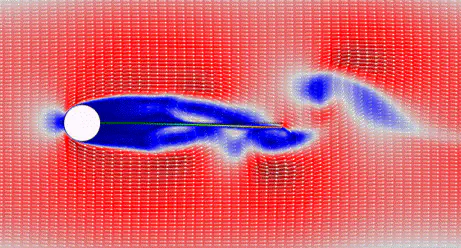An IPMC open-circuit sensing model with the addition of fluid-structure interaction (FSI)

Abstract
The soft electroactive polymer material, ionic polymer-metal composites (IPMCs), has been shown to exhibit a unique two-way transduction ability – allowing for the capacity of both sensing and actuation. As an artificial mechanotransductor, there are several advantageous properties of IPMCs over existing sensing measurement technology which, along with its ability to be used in aqueous environments, can be used for various underwater sensing applications. Prior, an in-depth analysis of the dominant behaviors of IPMC transduction has been disseminated into an all-encompassing model that accounts for the many complex characteristics that entail IPMC physics. The framework this model was built under depicts the finite-strain deformation of a hyperelastic material, while also considering the details of the polymer’s porous network, and the electrode deforming with the polymer material’s skeleton. The model was developed within the finite element software, COMSOL Multiphysics 5.6, where the derived nondimensional formulations for IPMC actuator and sensor physics were inputted using an equation-based modeling approach. Within the model, open-circuit (O-C) voltage sensor readings are obtained by reading the potential difference between the upper contact floating potential, and the lower contact set to ground. In this study, the sensing aspects of the model previously developed have been further expanded to include Fluid-Structure Interaction (FSI) physics, supplanting the prescribed displacement within the model with conditions similar to an in-lab test chamber. The model has hence been able to provide a comparable O-C voltage response between the model and in-lab conditions via a recirculating swim tunnel. The research proposed herein establishes a basis for expanding IPMC modeling to include FSI and further characterization of the IPMC transduction phenomena.